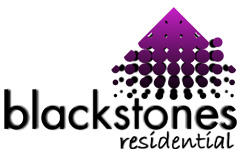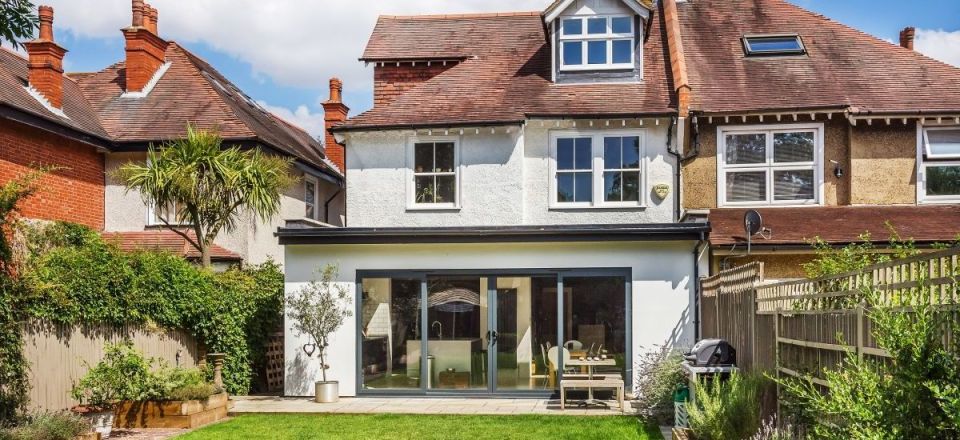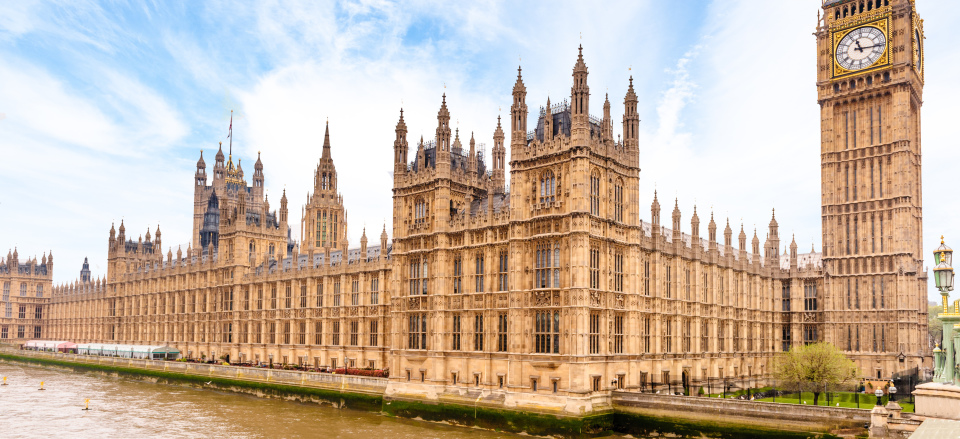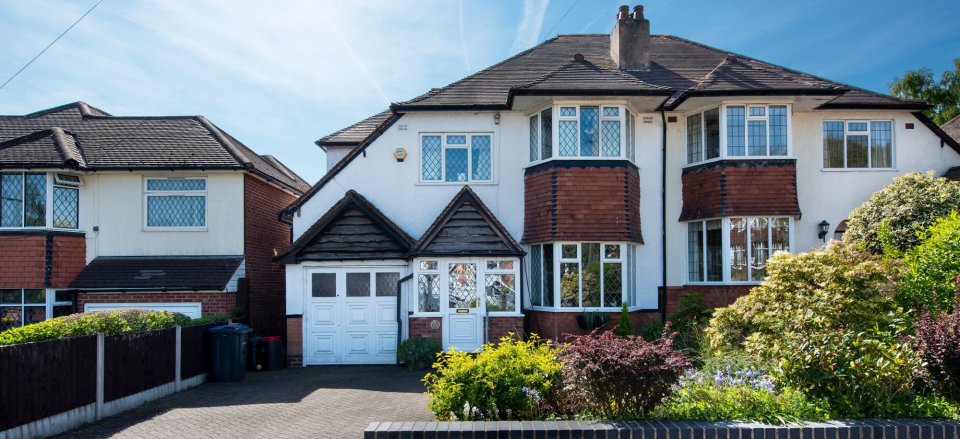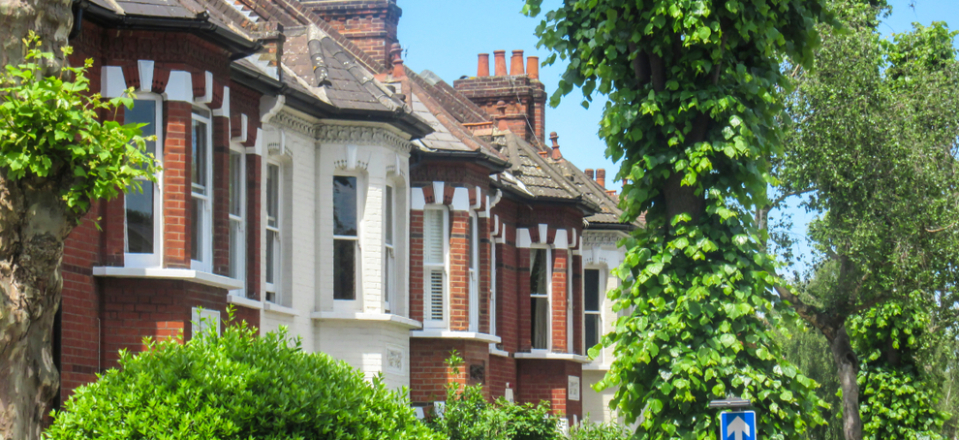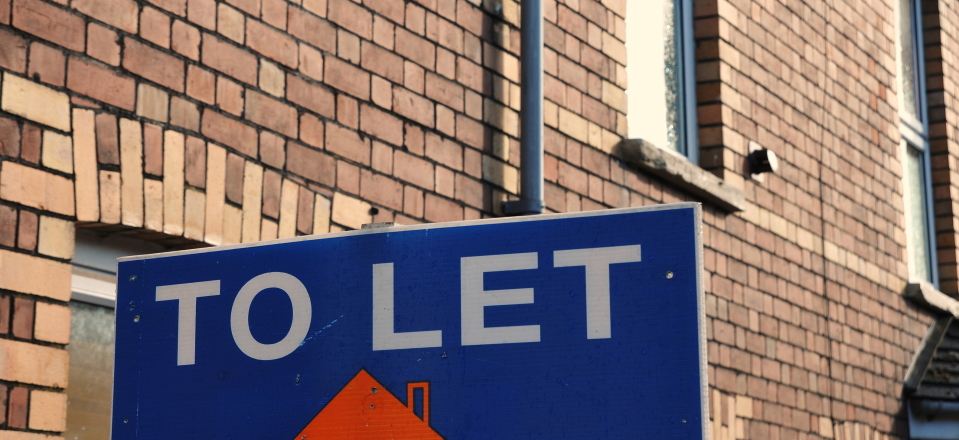Plan your August Bank holiday
Top ten things to do this August bank holiday
Staying at home is just not an option this August bank holiday weekend…
Make the most out of the last – and longest – weekend in August (Saturday August 24 – Monday August 26 2019). Yes, you can always jump in a London lido or snooze in a big old London park, but this August bank holiday is positively packed with things to do. You’ve gained a day off work, so make it count.
Check out top ten ways to let loose from Friday to Monday and before Tuesday kicks in again.

Notting Hill Carnival
Notting Hill Carnival 2019 is a vivid spectacle representing London’s multicultural past and present. This August bank holiday, which includes invaluable Notting Hill Carnival information, route details and tips on having fun and staying safe. Feel the energy of the mas bands, watch the Notting Hill Carnival Children’s Day parade and don’t be afraid to get a little lost in the streets of the Grove.
Time to let a home falls to record low of 20 days
Growing demand for rented property, combined with a falling supply has meant tenants must move quicker than ever to seal the deal.
The average time it takes to let a home dropped to a record low of 20 days during the first seven months of the year.
A combination of increased demand from tenants and falling supply as landlords exit the sector led to rental properties being snapped up quickly, according to Hamptons International.
While one-bedroom properties took the least time to let between 2014 and 2018, three-bedroom homes were moving quickest during the seven months to the end of July, suggesting a shift in tenant mix.
Unsurprisingly, the mismatch between supply and demand is pushing rents higher, with the cost of being a tenant rising by 1.9% in the year to July to average £982.
Why is this happening?
The rental market is currently experiencing strong demand as stretched affordability prices many people out of buying a home, while uncertainty over Brexit is causing others to put moving plans on hold.
Hamptons said it had seen a 5.6% increase in applications from potential tenants during the seven months to July.
At the same time, a combination of tax and regulatory changes have caused landlords to exit the sector and sell their properties, with Hamptons seeing a 5% fall in stock levels so far this year.
The fact that more tenants are chasing fewer properties has led to homes being let quicker.
Who does it affect?
The amount of time taken to find a tenant fell in every region of Great Britain during the first seven months of the year.
Finding tenants was quickest in the south west and East Midlands, at an average of just 18 days.
Landlords had to wait for the longest to find a tenant in the north east, but even here the process only took 24 days, and was still four days faster than it had been a year earlier.
London saw the biggest decline, with it taking just 19 days to let a property in the capital, six days quicker than during the same period of 2018, with properties in Hillingdon let within 9.5 days on average.
What’s the background?
Strong demand from tenants led to rents rising in nearly all regions of Great Britain.
Scotland saw the strongest year-on-year rise with rents increasing by 5.2%, followed by the south west at 4.7% and the south east at 4%. The Midlands was the only region to buck this trend, with rents decreasing by 2.7% in the past 12 months.
In terms of property types, the cost of renting a one-bedroom home rose by 2.8% year-on-year, compared with a 1.3% rise for three-bedroom homes.
Hamptons said this trend had contributed to more tenants looking to rent a larger property as a group, rather than a one-bedroom flat on their own.
Is the new-build premium worth it?
New-build homes are selling for a premium of £65,000, according to the Land Registry. We take a look at what is driving the price difference and ask whether it's worth paying.
New-build homes are selling for a premium of more than £65,000 compared with existing housing stock.
The average UK new home sold for £290,176, compared with a typical sales price of £224,729 for older properties, according to the latest figures from the Land Registry.
The premium buyers pay for a new build home has increased by £5,000 during the past year.
Historically, the price of new build and existing properties has been much closer, with buyers more likely to pay a premium for a home that is being resold.
Why is this happening?
A number of different factors are likely to be behind the strong price growth for new-build homes in recent years.
On the one hand, the higher price of new builds is likely to reflect the fact that housebuilding activity is currently concentrated in southern regions, particularly London, where property values are higher.
In fact, figures from the NHBC show that in the three months to the end of June 6,000 properties were built in London and 6,584 in the south east, compared with just 1,226 in the north east and 1,954 in Yorkshire and Humberside.
Some of the premium can also be accounted for by developers targeting the high-end of the market and building luxury homes in some locations.
But there are suggestions that the Government’s Help to Buy equity loan scheme is responsible for driving prices up in the new build sector, as the initiative only applies to new build properties.
Some studies claim the popularity of Help to Buy has created a mismatch between supply and demand, driving up the cost of new builds.
What advantages do new-build homes offer?
Potential buyers will have to think carefully about whether or not paying the new-build premium is worth it for them.
For first-time buyers who want to take advantage of the Help to Buy equity loan scheme the lure of a five-year interest-free loan worth up to 20% of their home’s value may well make it worthwhile.
This is particularly true if it enables them to purchase a bigger property, meaning they will need to make fewer moves up the housing ladder.
New-build homes come with other advantages too, as they are typically more energy efficient than older properties, while they require less maintenance and have a 10-year building warranty from the NHBC.
As a result of these factors, they tent to have lower running costs compared with existing housing stock.
Some new builds, particularly apartments, also come with significant amenities, such as gyms, swimming pools and even cinemas.
Finally, new developments may offer property types that are not currently plentiful among the existing housing stock, such as starter homes or detached family properties.
What are the downsides?
Unfortunately, new build properties do have some downsides as well.
While in theory no decorating should be required, in practice many homeowners have to go through the process of snagging with the developer, to sort out issues that may have been overlooked.
New build properties are also more likely to be leasehold than existing ones, which, particularly in the case of houses, tend to be freehold.
It is worth noting, however, that the Government is currently consulting on whether the majority of new-build houses should be sold as freehold.
Finally, new build properties are often smaller than their older counterparts as developers try to fit more units on to a site.
Homeowners appear to be shunning moving in favour of improving their property
High levels of equity being withdrawn by people remortgaging suggests homeowners are investing in significant improvement works.
Growing numbers of homeowners appear to be opting to extend or improve their current property instead of trading up the housing ladder.
Around 16,880 people increased the outstanding size of their loan in June when they remortgaged, borrowing an additional £56,100 each on average, according to figures from UK Finance.
While the group does not track what homeowners are using the money for, commentators speculated that it was being used for substantial home improvements.
Adrian Anderson, director of mortgage broker Anderson Harris, says: “Many borrowers are taking on extra borrowing when they come to remortgage.
“This is a clear sign that homeowners are staying put and improving or extending, rather than paying the hefty cost of moving home.”
The number of people who took on additional borrowing outstripped the 15,320 homeowners who switched loans without increasing the size of their mortgage.
The total was also 8% higher than it had been in June 2018, suggesting it represents a growing trend.
Why is this happening?
A number of factors are likely to be driving the decision among homeowners to extend rather than move.
As house prices have risen, the associated costs of moving – many of which are charged as a percentage of a property’s value, have also increased.
In its most recent survey, Lloyds Bank estimate the average person now spends more than £12,000 on taxes, surveyors’ and estate agents’ fees and moving costs when they buy a new home.
At the same time, growth in property values has increased the gap between the cost of a starter home and a family property, leading to many people finding their second step up the property ladder harder than their first.
Meanwhile, the current shortage of homes for sale, means those looking to buy a new property have only a limited choice.
As a result, it appears that many people have decided they are better off staying put and finding a way to extend their current home.
Who does it affect?
While improving their property may make sense for homeowners instead of moving, it is bad news for the housing market as a whole.
In order to function efficiently, the property market needs a steady stream of people to be trading up the ladder to free up properties for those lower down.
The current subdued level of transactions has led to a shortage of homes for sale, which has in turn deterred existing homeowners from moving, creating a vicious circle.
What’s the background?
For homeowners considering extending or improving their property, it is worth weighing up the costs of the work involved against the likely value it will add to their property.
A study carried out by Anglia Home Improvements earlier this year found that while a loft conversion typically adds an average of £24,255 to a home’s likely sale price, building an extension had far less impact at £6,456.
Those considering adding a conservatory in order to get more space, may only see the value of their property rise by £3,155.
What are Boris Johnson’s pledges on stamp duty?
New Government, new era for stamp duty? We take a look at the Prime Minister’s pledges to overhaul the property tax.
Increase the stamp duty threshold to £500,000
While campaigning to be leader of the Conservative Party, Johnson announced he was considering increasing the threshold at which stamp duty kicks in to £500,000 from its current level of £125,000.
The move, when combined with the properties that are already not liable for stamp duty, would mean an estimated 770,000 homebuyers would not pay the tax each year, according to think tank Onward.
Winners: Anyone buying a home for between £125,000 and £499,999, with those purchasing at the top end of this range saving nearly £15,000 compared with the current system.
Losers: HM Revenue & Customs. The change could reduce the stamp duty take by around £3.3bn a year, according to Onward.
Reduce the top stamp duty rate to 7% from 12%
The Prime Minister also suggested he could reduce the top rate of stamp duty from 12% to 7%. The 12% rate, which kicks in on homes sold for more than £1.5m, was increased by the then-chancellor George Osborne in 2014. But it has been widely blamed for leading to a sharp fall in transactions at the top end of the market.
Winners: People buying a home costing more than £1.5m who will save considerable sums if the change goes ahead.
Losers: HMRC would see a further fall in revenues, although some of this drop could be offset if the change leads to more high-end homes changing hands.
Sellers pay stamp duty instead of buyers
Perhaps the most radical change Johnson is understood to be considering is changing who is liable for stamp duty so that the seller rather than the buyer pays the tax.
Such a move, which was not announced when he was on the campaign trail, would ease the burden on people trading up the property ladder, while those selling would be able to tap into their equity to pay the stamp duty they owed.
But the change could prove unpopular, as it would mean existing homeowners effectively having to pay the tax twice, having already paid it when they purchased their home.
Winners: First-time buyers purchasing a home for more than £300,000, people trading up the property ladder.
Losers: Those downsizing as they would face higher stamp duty bills on the home they are selling, rather than the one they are buying.
Anything else?
One aspect of stamp duty that Johnson has not been reported to be considering reforming is the 3% surcharge for buy-to-let investors and those purchasing a second home.
This additional tax has contributed, along with other tax and regulatory changes, to a fall in landlords entering the sector and those expanding their portfolios. It has, however, helped first-time buyers through reducing competition for homes at the bottom-end of the housing ladder.
It is also worth noting that there has not been an official announcement or timeline for the reforms published since Johnson became leader.
This uncertainty could lead to temporary distortions in the market if people delay purchases in the hope of paying less stamp duty if they wait.
Top 3 takeaways
-
The Prime Minister has promised to increase the threshold at which stamp duty kicks in to £500,000 from its current level of £125,000
-
Johnson is also expected to reduce the top rate of stamp duty from 12% to 7%.
-
Under the reforms, the tax could be paid by the seller rather than the buyer.
House prices rise by the price of a good bottle of wine a day
The typical home saw £2,046 added to its value during the first six months of the year.
The value of the average home increased by £11 a day during the first half of 2019, adding £60 billion to the total value of the UK’s housing stock.
House prices rose by £2,046 in the six months to the end of June, but the headline figure masked significant regional variation, according to analysis by Zoopla.
The West Midlands was the best performing region, with property values jumping by an average of £36.58 a day, giving a total gain of £6,695.
But at the other end of the spectrum, house prices in London fell by £71.23 a day, wiping around £13,035 off their value during the first half of the year.
Laura Howard, spokesperson for Zoopla, said: “An increase in the total value of housing was recorded across nine of the 11 regions analysed, with average property values in the West Midlands making the most for homeowners.
Which regions have seen the strongest growth?
While the West Midlands posted the strongest house price gains during the first half, south east England was not far behind, with the typical home adding £35.32 a day to its value or a total of £6,463.
North west England saw the third strongest gains at £20.39 a day, with Yorkshire and the Humber completing the top five with homes in the region rising by an average of £12.37 a day during the first half of the year.
Regional value changes since January 2019
|
Rank |
Region |
January value (£) |
July value (£) |
£ total change |
£ change per day |
|
1 |
West Midlands |
230,676 |
237,371 |
£6,695 |
£36.58 |
|
2 |
South East England |
406,821 |
413,284 |
£6,463 |
£35.32 |
|
3 |
North West England |
198,446 |
202,177 |
£3,731 |
£20.39 |
|
4 |
Wales |
190,610 |
193,910 |
£3,300 |
£18.03 |
|
5 |
Yorkshire and The Humber |
181,918 |
184,181 |
£2,263 |
£12.37 |
|
6 |
East of England |
360,707 |
362,823 |
£2,116 |
£11.56 |
|
7 |
East Midlands |
224,352 |
226,177 |
£1,825 |
£9.97 |
|
8 |
North East England |
192,388 |
193,663 |
£1,275 |
£6.97 |
|
9 |
South West England |
309,333 |
310,165 |
£832 |
£4.55 |
|
10 |
Scotland |
194,942 |
191,174 |
-£3,768 |
-£20.59 |
|
11 |
London |
670,535 |
657,500 |
-£13,035 |
-£71.23 |
Where is the housing market slower?
Alongside London, Scotland was the only other region to see house price falls in the first half of 2019, with properties north of the border losing an average of £20.59 of their value each day.
Meanwhile, growth was subdued in the South West, with house prices rising by just £4.55 a day or a total of £832 during the first six months, and the North East, where property values rose by £6.97 a day.
Despite the price falls, London continues to have the most expensive homes by some margin, with the average property costing £657,500, followed by the south east of England at £413,284.
What about individual towns?
In terms of individual towns, properties in Berkhamsted enjoyed the largest gains at an average of £185.11 a day, adding a massive £33,875 to their value during the first half of the year.
Reigate was not far behind with house prices in the town rising by £184.28 a day, followed by Epping at £178.45 a day.
In London, Notting Hill and Holland Park saw the fastest house price rises at £141.46 a day.
By contrast, the biggest losses were recorded in Hampstead, Belsize Park and Swiss Cottage, where house prices slipped by an average of £179.28 a day, and Leatherhead at £141.46 per day.
Top 10 post towns for value increases since January 2019
|
Rank |
Town |
January value (£) |
July value (£) |
£ total change |
£ change per day |
|
|
1 |
Berkhamsted |
683,356 |
717,231 |
£33,875 |
£185.11 |
|
|
2 |
Reigate |
583,392 |
617,115 |
£33,723 |
£184.28 |
|
|
3 |
Epping |
593,587 |
626,244 |
£32,657 |
£178.45 |
|
|
4 |
Billericay |
523,326 |
554,625 |
£31,299 |
£171.03 |
|
|
5 |
Winchester |
537,660 |
568,681 |
£31,021 |
£169.51 |
|
|
6 |
Bushey |
565,030 |
593,849 |
£28,819 |
£157.48 |
|
|
7 |
Ware |
462,779 |
489,563 |
£26,784 |
£146.36 |
|
|
8 |
Godalming |
593,181 |
619,963 |
£26,782 |
£146.35 |
|
|
9 |
Uckfield |
440,467 |
464,636 |
£24,169 |
£132.07 |
|
|
10 |
Waltham Cross |
399,642 |
423,025 |
£23,383 |
£127.78 |
|
Top 3 takeaways
-
The value of the average home increased by £11 a day during the first half of 2019 adding £60 billion to the total value of the UK’s housing stock
-
The West Midlands was the best performing region, with property values jumping by an average of £36.58 a day
-
House prices in London fell by £71.23 a day, wiping around £13,035 off their value during the first half of the year
Number of company landlords reaches highest level for eight years
More than one in 10 rental properties are now owned by a company as tax changes make private landlords feel the pinch.
Tenants are now more likely to be renting their home from a company landlord, as opposed to a private landlord, than at any time in the past eight years.
Firms now let more than one in ten properties, the highest level since 2011 and up 9% from 2015 when tax changes for private landlords were announced, according to research from Hamptons International.
This means company landlords own 641,480 buy-to-let homes in Great Britain, 42% more than four years ago, with London landlords the most likely to own a buy-to-let using a company structure.
The average cost of a new let in Great Britain also rose to £986 pcm in June, a 3.1% year-on-year increase driven by rising rents in the South.
Table 1 – Percentage and estimated number of homes let by company landlords in GB
| Year | % of homes let by company landlords | Estimated number of homes let by company landlords |
| 2008 | 14% | 456,260 |
| 2009 | 13% | 449,900 |
| 2010 | 14% | 524,540 |
| 2011 | 12% | 481,780 |
| 2012 | 10% | 443,740 |
| 2013 | 10% | 448,080 |
| 2014 | 9% | 449,260 |
| 2015 | 9% | 452,600 |
| 2016 | 9% | 458,280 |
| 2017 | 10% | 535,330 |
| 2018 | 10% | 537,060 |
| 2019 H1 | 12% | 641,480 |
Source: Hamptons International & EHS
Why is this happening?
Tapering of mortgage interest tax relief for non-company landlords was introduced in April 2017.
Previously, private landlords could deduct both mortgage interest and other costs associated with a let property from their rental income before calculating how much tax was due.
But new regulations stated the amount of mortgage interest individual landlords could write off for tax purposes would drop by 25% each year.
By next year all rent must be declared as income. They are then taxed on total income and need to claim back 20% as a credit.
Buy-to-lets owned by a limited company are taxed differently and the changes to the tapering of mortgage interest tax relief do not apply.
Company landlords are viewed as businesses, with expenses written off for tax purposes, including mortgage interest payments.
But there are other costs associated with owning a property through a limited company. For example, mortgage costs tend to be higher and landlords have to take their income in the form of a dividend. Company landlords also pay corporation tax rather than income tax.
The sector has also been hit by the introduction of a 3% Stamp Duty Land Tax on second property purchases.
This has led to a surcharge of thousands of pounds on property and forced many private landlords to rethink extending their portfolios.
Who does it affect?
The mix of landlords continues to sway towards companies from private individuals, but how this affects the tenants differs from case to case.
What the research does show is that demand in certain locations is increasing for rental properties and this is pushing up the cost of renting. The South West recorded the strongest rental growth, with rents rising 4.5% annually.
Aneisha Beveridge, Head of Research at Hamptons International, said: “Increasing taxation for private landlords combined with the growth of the build-to-rent sector has meant that more companies are letting homes than at any time since our records began.
“London, where landlords tend to have higher levels of debt and often the most to gain from corporate ownership, has the largest proportion of homes let by a company.
“However, it’s not always more profitable to put a buy-to-let into a company as other associated costs come into play.
“Strong rents in the South drove rental growth in Great Britain in June. Low stock levels, particularly in the South, continue to put pressure on rents.”
Renters will be able to check on landlord’s background
The Government has unveiled plans to make its rogue landlords list open access.
Prospective tenants could soon check out be able who they are renting from if new government proposals come to pass.
The plan is for a database of rogue landlords, charting misdemeanours such as being banned for failing to provide habitable homes, would be opened up to those looking to rent.
The current Rogue Landlords Database is only open to local authorities and since launch last year, has only registered 10 names.
The initial proposals would only apply in England because of devolved housing policy.
"This database has the potential to ensure that poor quality homes across the country are improved and the worst landlords are banned,” said Communities Secretary James Brokenshire.
“It is right that we unlock this crucial information for new and prospective tenants. Landlords should be in no doubt that they must provide decent homes or face the consequences."
There are now more than four-and-a-half million households renting in England, with house prices out of reach for first time buyers being cited as a key reason for the rise.
A 12-week consultation on the plans will also consider whether to widen the scope of the rogue landlords list to more housing-related offences, such as breaching the Tenant Fees Act.
The rental market has been in the spotlight for reform in recent months with pressure to end no-fault evictions, which allow landlords to get rid of tenants without a reason after their fixed-term tenancy period has ended.
Landlords exit buy-to-let as 120,000 properties are sold
The increase in landlords leaving the sector since the Government imposed tax hikes are thought to have contributed to the fastest rent rises in 18 months.
More than 120,000 buy-to-let properties are thought to have been sold by landlords since the Government imposed higher taxes on the sector.
Analysis of UK Finance data by Savills found that 120,000 buy-to-let mortgages have been redeemed in the past two years.
The group blamed the situation on the raft of tax changes and new regulations introduced in the past three years which has made the sector significantly less attractive for individual investors.
The research comes as figures from the Office for National Statistics showed rents climbed at their fastest rate for 18 months in May.
The average cost of letting a home increased by 1.3% year-on-year, the biggest annual jump since November 2017.
Property commentators have warned that a mismatch between supply and demand is being created as landlords reduce their portfolios or exit the sector altogether, putting upward pressure on rents.
Investors are also thought to be hiking their rates in response to the higher costs they now face.
Why is this happening?
The Government has introduced a number of tax and regulatory changes to the buy-to-let sector which makes it significantly less profitable.
Among the changes are a 3% stamp duty surcharge on the purchase of additional properties, introduced in April 2016, a tapering of mortgage interest tax relief and an end to the ‘wear and tear’ allowance.
Other changes include a ban on charging fees to tenants, a limit on the amount tenants can be charged to repair minor damage to properties, and a requirement for more landlords to upgrade their properties to make them energy efficient.
Who does it affect?
The situation is bad news for both landlords and tenants.
As a result of the subdued state of the housing market, buy-to-let investors are no longer making significant capital gains on their portfolios, meaning they have less incentive to hold on to rental properties on which they are only breaking even or incurring a slight loss.
As a result, many are selling up. This means there are fewer homes available to rent, which is, in turn, pushing up the cost of being a tenant.
However, first-time buyers, who no longer have to compete against landlords for properties at the bottom of the housing ladder, could benefit.
What’s the background?
With private landlords exiting the sector, Savills is predicting ‘build to rent’ investors will step in and fill the void.
The properties are high quality and professionally managed homes that have been built specifically for renters. They have corporate landlords and longer tenancies, as well as a typically offering a range of extra facilities.
While there are currently only 30,000 build to rent homes that have been completed, with another 110,000 in the pipeline, Savills estimates there could be 1.7 million homes when the sector reaches maturity, accounting for more than a third of the private rented market.
Flat prices fall as first-time buyers shun starter homes
People purchasing their first home appear to be aiming higher up the property ladder
The price of flats is falling as first-time buyers leapfrog their way on to the second rung of the property ladder.
The average cost of a flat fell by 1.6% in the year to the end of April to stand at £199,018, according to the Land Registry.
By contrast all other property types increased in value, with detached houses seeing the biggest year-on-year gain of 2.7%, followed by semi-detached homes at 2% and terraced properties at 1.9%.
Property commentators attribute the trend to first-time buyers delaying the purchase of their first home, then buying a more expensive property further up the ladder when they do take the plunge.
There is also the suggestion that while young people are quite happy to rent a flat, they do not necessarily want to buy one.
Why is this happening?
Some of the fall in the price of flats can be attributed to the current absence of buy-to-let investors in the market.
But this trend has been playing out over the past two years, following a raft of government tax hikes that made the sector less profitable, and it is unlikely to account for all of the fall.
Instead, it is thought that first-time buyers who traditionally compete with investment landlords for homes at the bottom of the property ladder are also shunning flats.
With the average age at which people purchase their first home increasing, many are instead thought to be jumping straight to properties that would be suitable for a young family.
Who does it affect?
Reducing the number of steps they take on the property ladder is a smart move for first-time buyers.
The typical move involving a house purchase costs £12,000, according to Lloyds Bank.
At the same time, while first-time buyers are exempt from stamp duty on the first £300,000 of a property purchase, this tax break does not apply to those trading up the ladder.
As a result, delaying the purchase of a home until they can afford an average priced semi-detached house costing £216,938, will save first-time buyers £1,838.76 in stamp duty.
What’s the background?
One of the reasons first-time buyers are able to leapfrog a rung of the housing ladder is likely to be due to the range of initiative’s available to help them purchase a home.
Under the Help to Buy equity loan scheme, people can purchase a new-build property with just a 5% deposit, with the Government topping this up with a five-year interest-free loan.
With the typical semi-detached home costing 9% more than a flat, this loan would be enough in many areas of the UK to enable first-time buyers to purchase something higher up the ladder.
The Shared Ownership scheme, under which people can buy a share in a property of between 25% to 75% and rent the rest, also enables young people to afford to buy larger properties.
